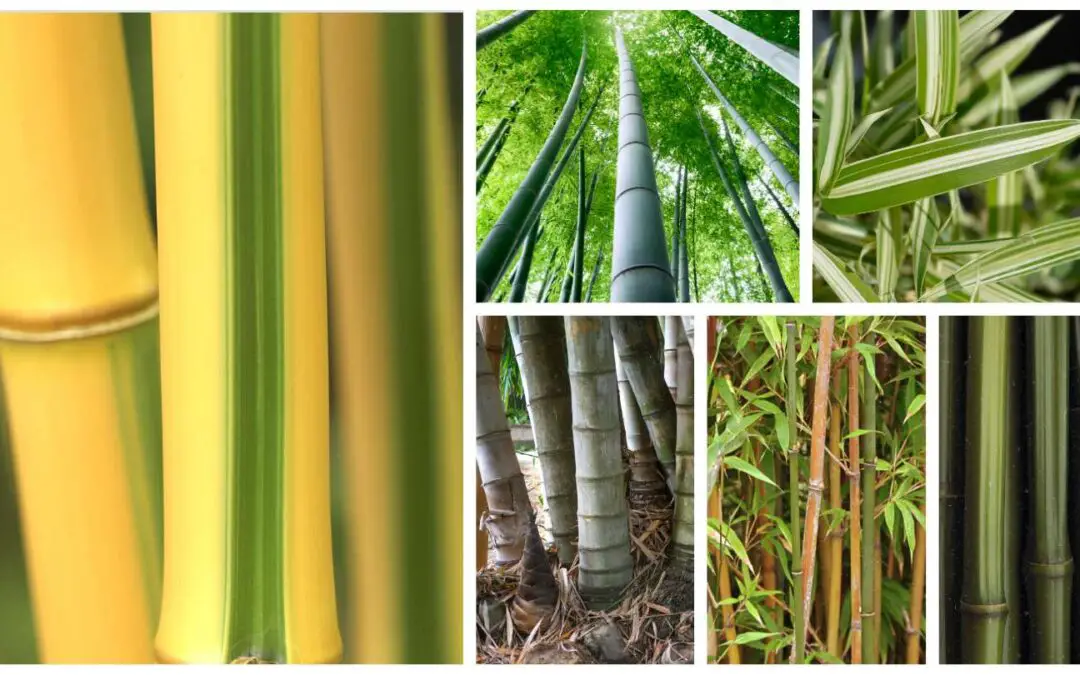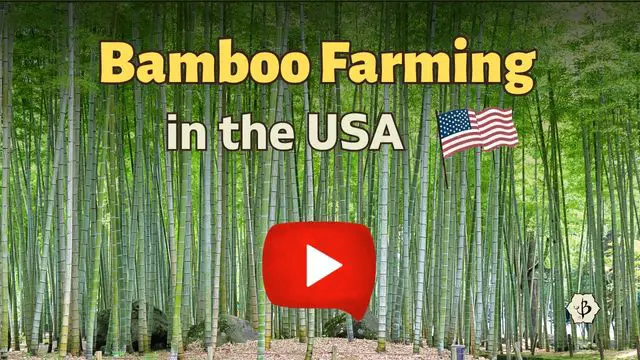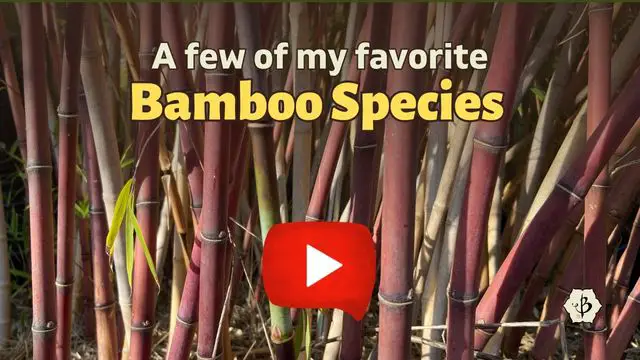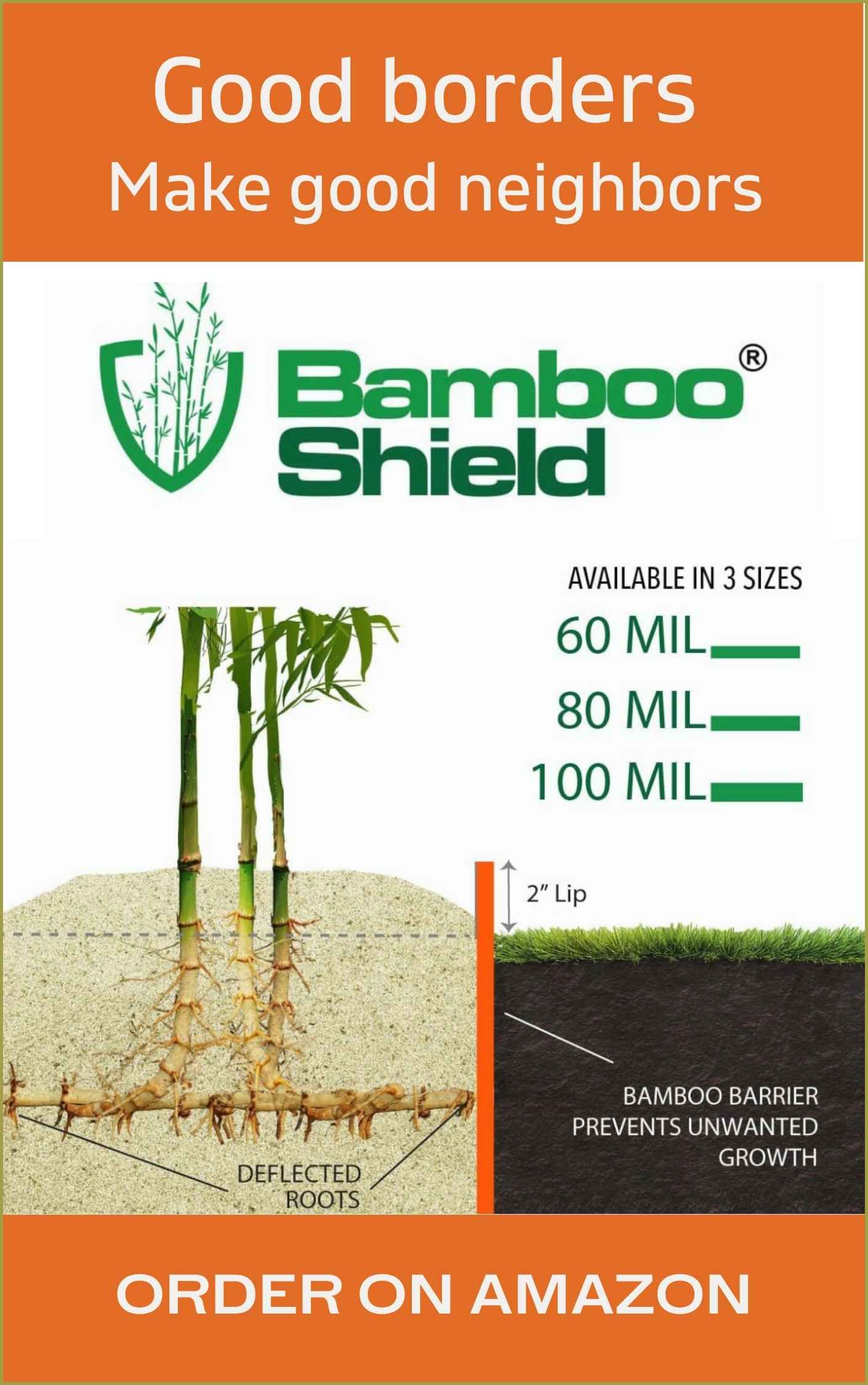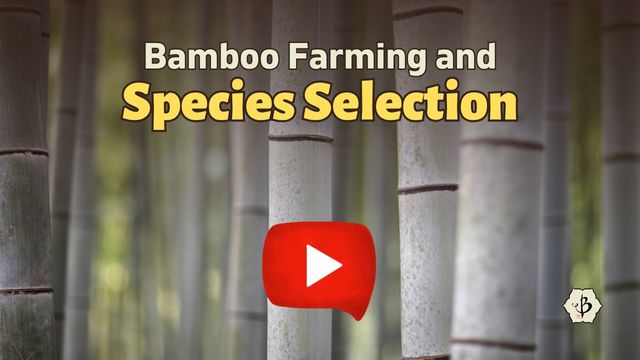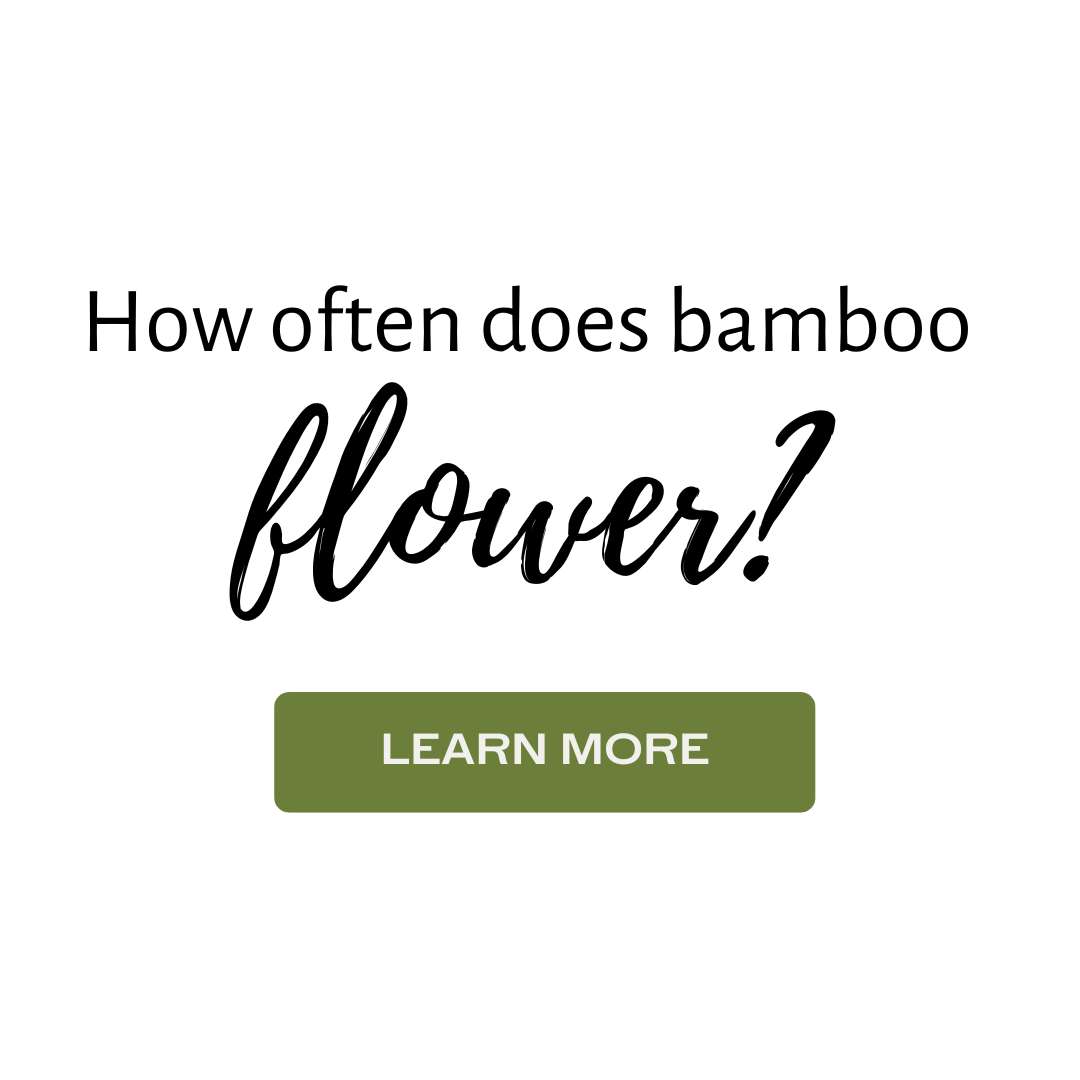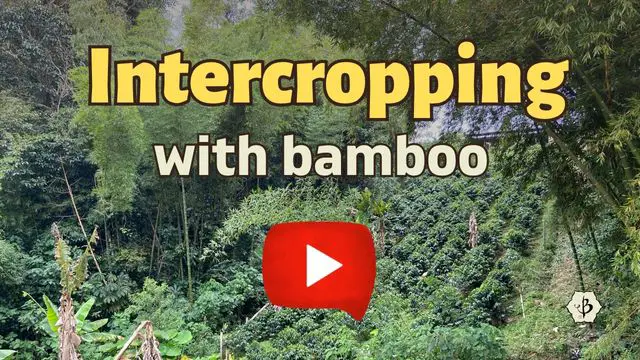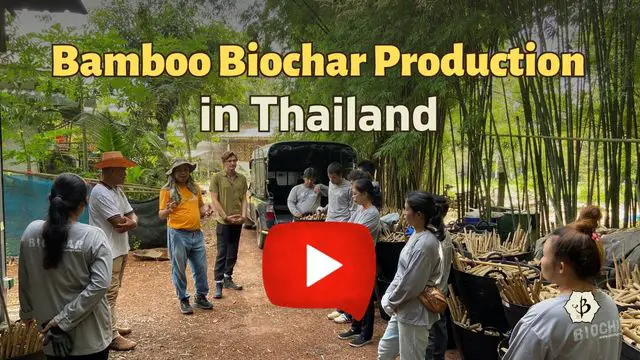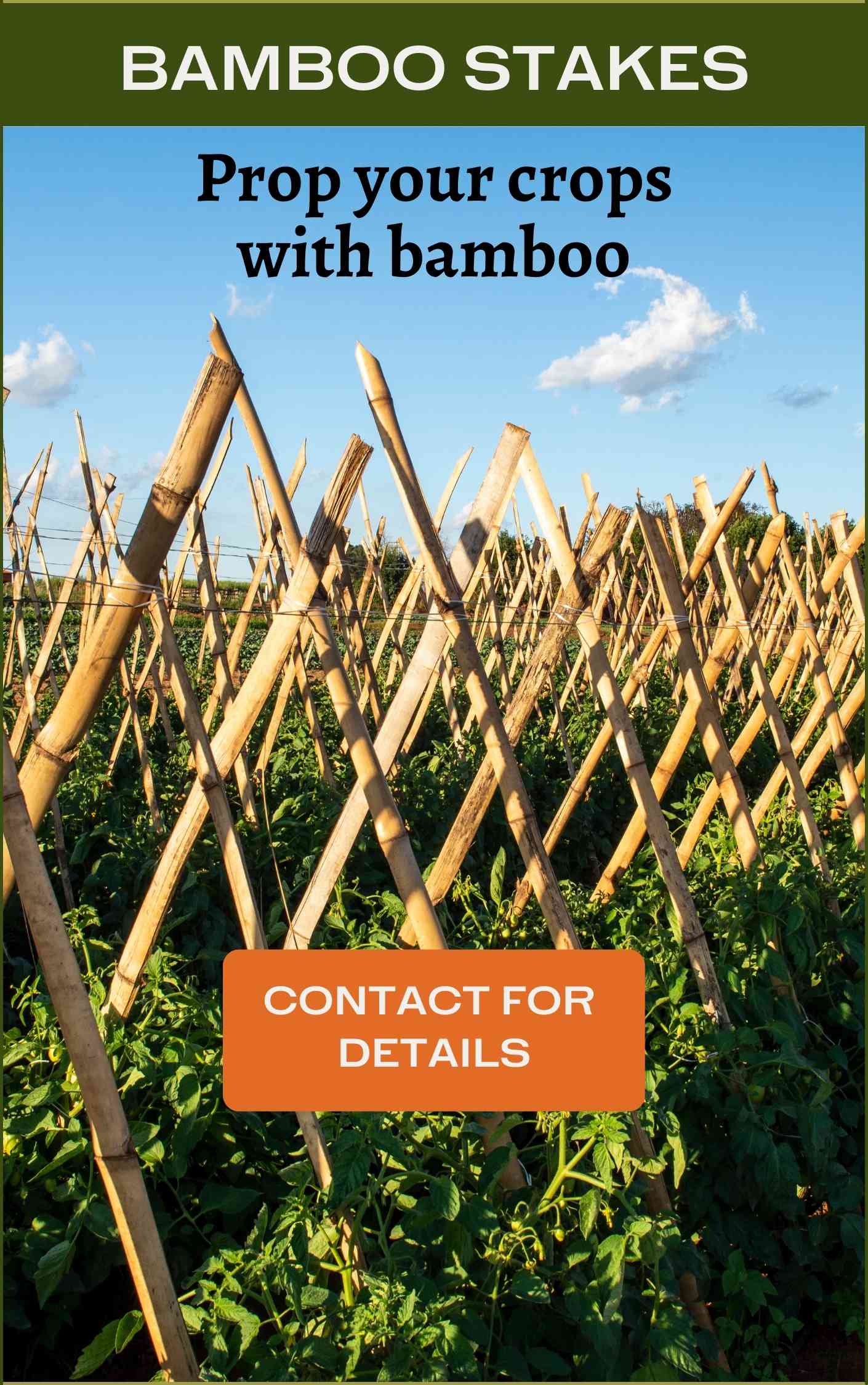Bamboo is more than just an amazing plant. It’s more like an entire family, made up of nearly 2,000 plants. But technically, according to the botanical taxonomy, bamboo is a sub-family within the grass family, Poaceae.
The subfamily Bambusoideae includes 3 tribes, roughly 100 genera, and approximately 1,400 species of bamboo. Botanists don’t always agree on the classifications, so the numbers can vary. Furthermore, many species have multiple cultivars, or subspecies, so the total number of bamboo varieties is probably closer to 2,000.
In the following directory, we’ll break down the multitude of bamboos, genus by genus, to see how they all fit in the great web of life. Three separate tables, one for each bamboo tribe, will cover the most important genera of bamboo, according to the classifications that most botanists agree on.
NOTE: This article first appeared in November 2020, most recently updated in April 2025.
Botanical taxonomy of bamboo
Before we launch into the genera (plural of genus) and species of bamboo, it’s useful to see where bamboo fits into the overall classification system.
- Kingdom: Plant
- Phylum: Angiosperms (flowering plants, as opposed to Gymnosperms, such as conifer trees)
- Class: Monocots (their seeds contain one embryonic leaf, as opposed to Dicotyledons with two)
- Order: Poales (includes grasses, sedges and bromeliads)
- Family: Poaceae, aka Graminieae (grasses)
- Subfamily: Bambusoideae (the bamboo family)
- Tribes: Arundinarieae (temperate woody bamboo), Bambuseae (tropical woody bamboo), and Olyreae (herbaceous bamboo)
- Sub-tribes: some botanists use this division to divide the bamboo tribes into smaller units.
- Genus and Species: these are the two divisions that give us the binomial nomenclature, or scientific names of the plants, such as Phyllostachys nigra or Bambusa oldhamii.

Tribe Arundinarieae: Genera of temperate woody bamboo
Primarily native to China and the Far East, but also in Africa and North America, temperate bamboos can generally tolerate colder temperates. They come in all sizes, from towering giants to dwarfish ground covers. The majority of Arundinarieae bamboos have running rhizome systems (as opposed to clumping), enabling them to spread and proliferate quickly.
However, a handful of temperate bamboos have clumping rhizomes, making them difficult to classify. Not everyone accepts the genus Borinda or genus Thamnocalamus, for example, which can belong to either tribe. Also, Yushania has pachymorph (clumping) rhizomes, but with longer necks and a spreading habit, so botanists aren’t quite sure where to place it. Such bamboos grow in what we call “open clumps”.
| Genus | Native habitat zones | Running or Clumping | Notes and characteristics |
| Acidosasa | China, Vietnam | running | known for edible shoots, sweet and sour |
| Arundinaria | North America | running | 3 American species, other species are questionable |
| Bashania | China, Vietnam | running | cold hardy, mountain varieties |
| Borinda | Himalayas, S China | clumping | close relation to Fargesia (questionable) |
| Chimonobambusa | China, Japan, Himalayas, Vietnam | running | unusual culms, square and knobby |
| Drepanostachyum | Himalayas, China, India | clumping | close relation to Himalayacalamus |
| Fargesia | China, Vietnam | clumping | extremely cold hardy |
| Himalayacalamus | Himalayas | clumping | medium sized ornamentals |
| Indocalamus | China, Vietnam, Japan | running | smaller plants, larger leaves |
| Phyllostachys | China, Vietnam | running | hardy, vigorous, in all sizes |
| Pleioblastus | China, Japan | running | smaller plants, often striped |
| Pseudosasa | China, Japan, Vietnam | running | small to medium sized |
| Sasa | Japan | running | small plants, broad leaves |
| Sasaella | Japan | running | smaller plants |
| Semiarundinaria | China, Japan | running | tall and widespread |
| Shibataea | China | running | small and ornamental |
| Sinobambusa | China, Vietnam | running | medium sized plants |
| Thamnocalamus | Himalayas, Madagascar, S Africa | clumping | close relative to Fargesia |
| Yushania | Himalayas, Africa, China | open clumps | mountainous, formerly in Bambuseae tribe |
Genus Arundinaria
This genus is notable for containing the only three species of bamboo native to the continental United States. Formerly, the genus had included several other species, but most authors now recognize only three American bamboos as belonging to Arundinaria.
Genus Bashania
The small genus of clumping bamboo includes fewer than ten species, according to most systems. These are small to medium-sized bamboo varieties native to Southern China and Vietnam. Some species have been relisted as Indocalamus or Sarocalamus.
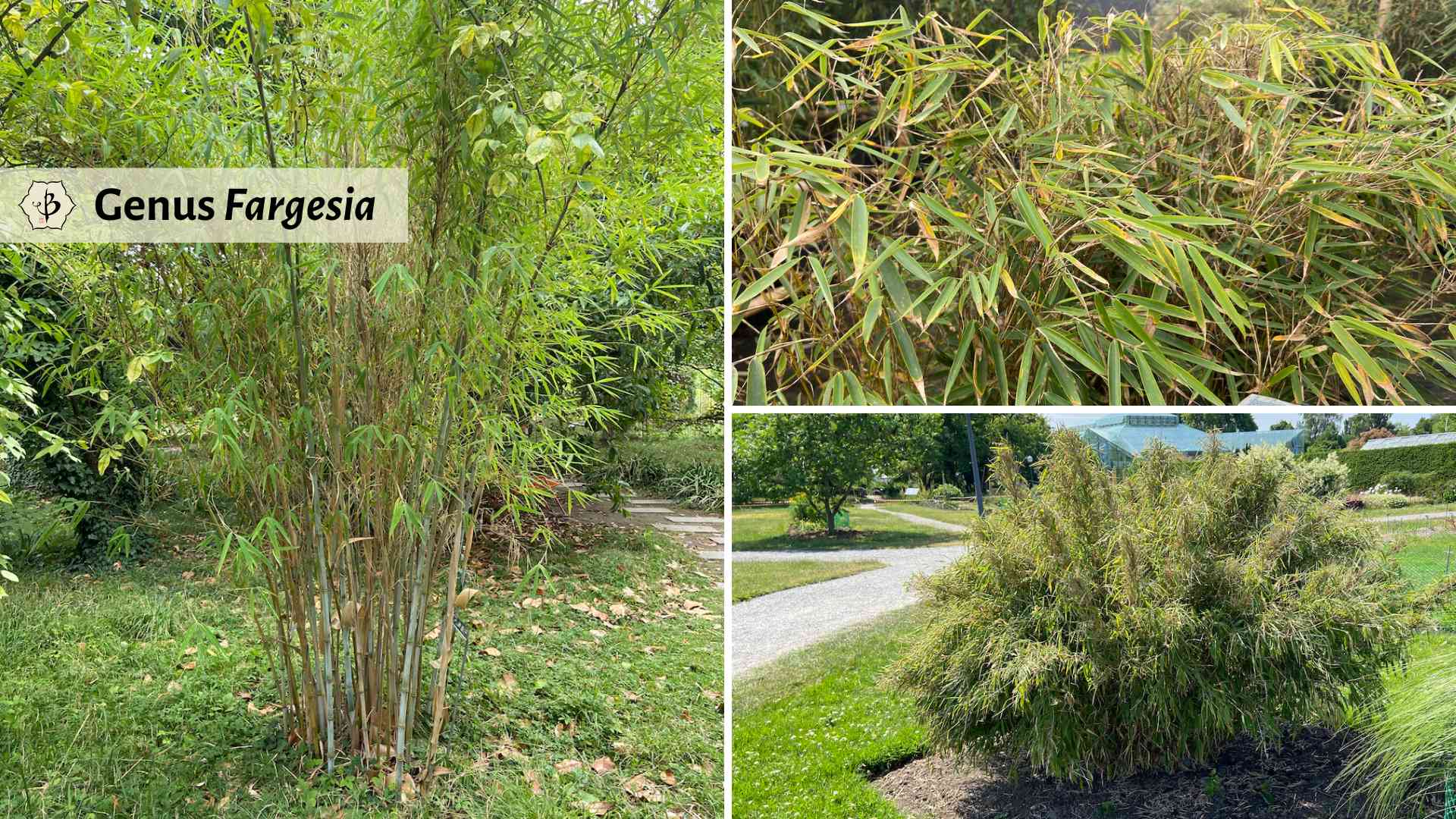
Genus Fargesia
One of the more exceptional groups of bamboo, Fargesia are dense clumpers but some of the most cold-hardy of any species. In temperate climates, they are something of a gardener’s delight. They can withstand deep freezes without growing invasive. And many species also have colorful culms of powdery blue or burgundy-pink.
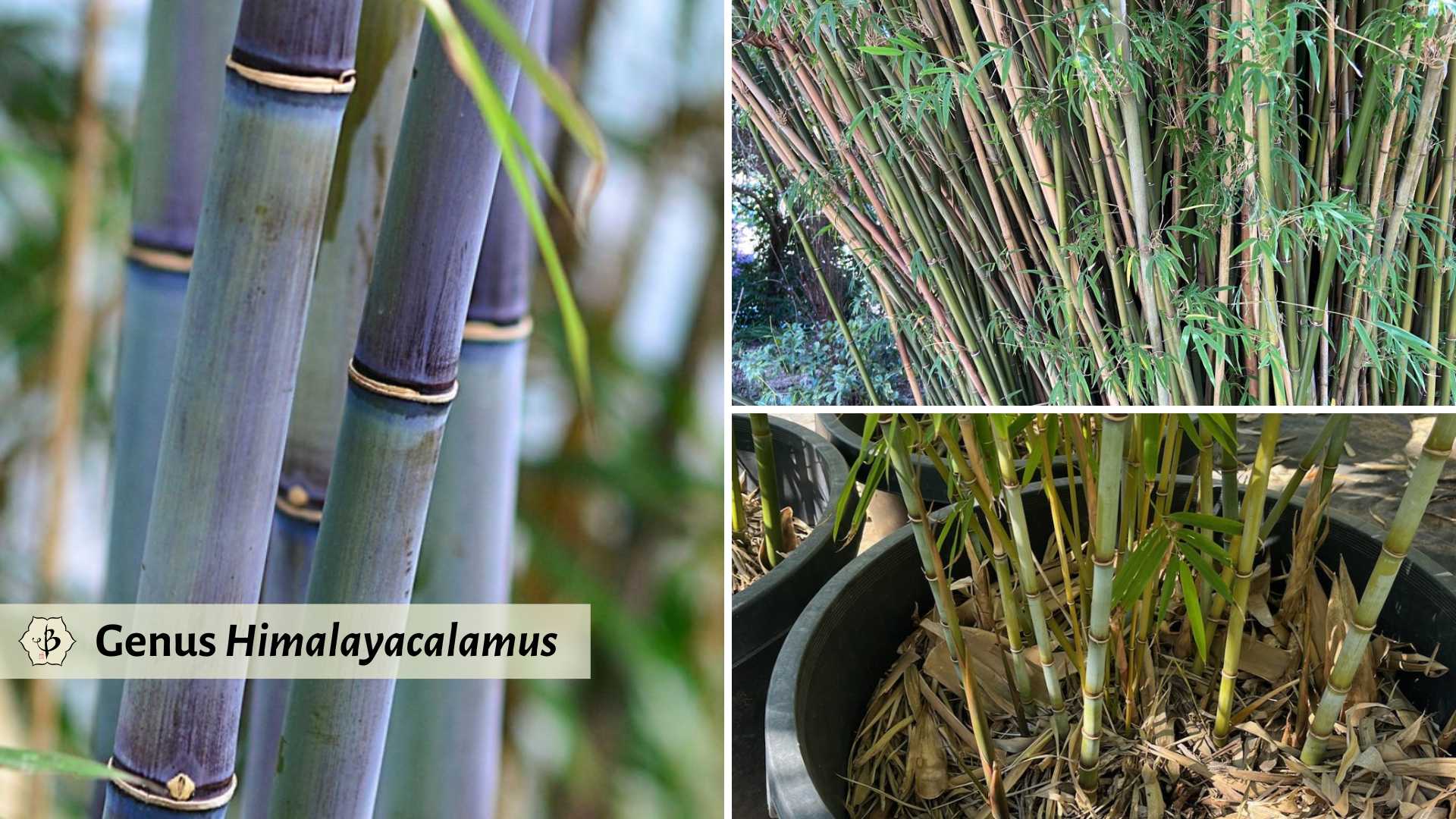
Genus Himalyacalamus
Predominantly native to the foothills of the Himalayas, members of the genus Himalayacalamus are quite cold-hardy. Unlike most temperate bamboo, they have clumping rhizomes. In these respects, the genus is similar to Fargesia. They are best suited for cool, shady locations. Many species develop colorful, blueish culms that add a beautiful highlight to any garden.
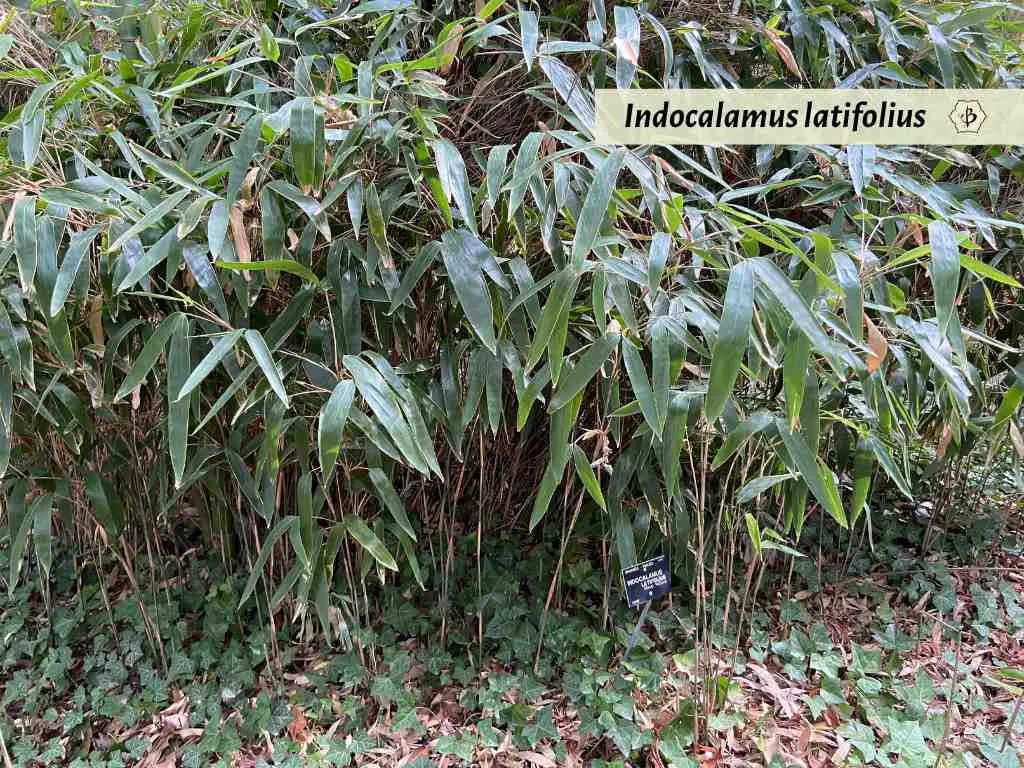
Genus Indocalamus
These medium-sized and slower-running bamboos are somewhat unusual, but I. latifolius is an attractive ornamental with slender culms and a compact footprint. I. tessellatus is remarkable for its giant leaves and low stature, making for an interesting hedge.
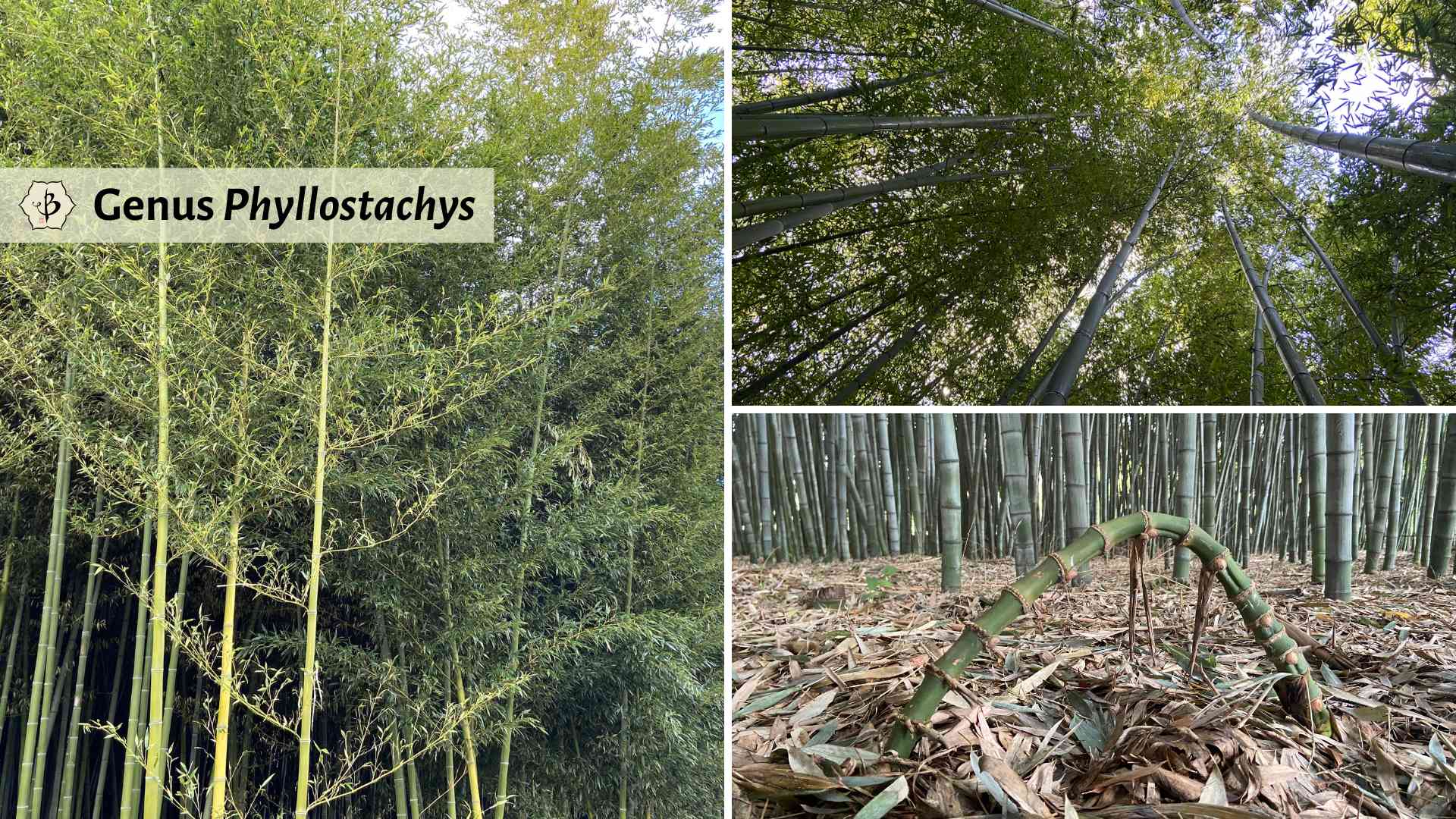
Genus Phyllostachys
Probably the most widespread genus of bamboo, definitely in cooler climates, Phyllostachys includes an enormous variety of incredibly resilient bamboo species. From the giant Moso of China, used for all manner of commercial products like clothing and flooring, to the ordinary golden bamboo (P. aurea) that can be found in pots and front yards around the world. The smallest Phyllostachys are suitable for bonsai, while varieties like Henon are cultivated across the American south for poles and building material.
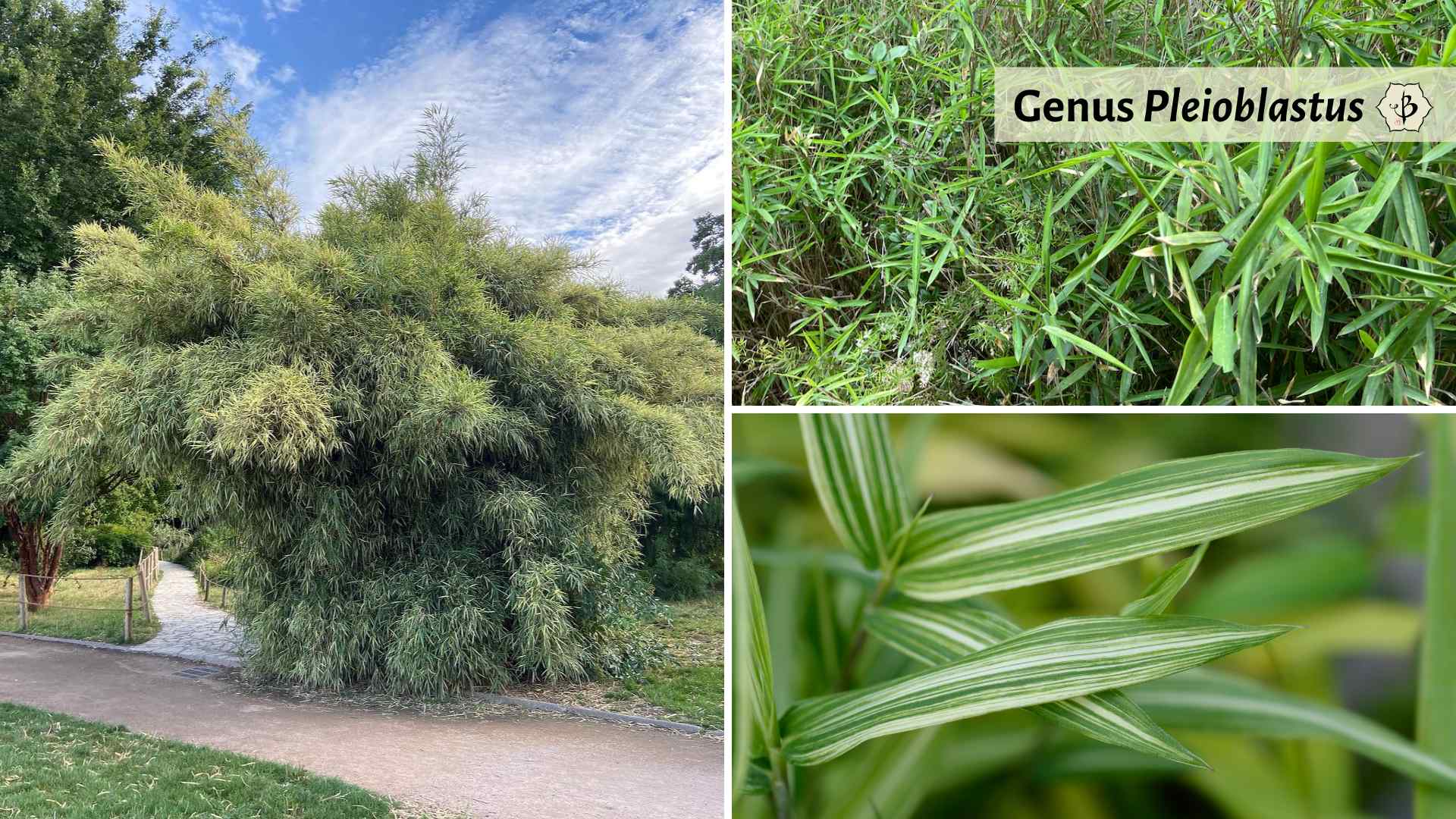
Genus Pleioblastus
A large genus of small bamboo, these dwarf varieties make great accents and groundcovers. But don’t let the low height and delicate culms fool you, they have some very vigorous roots that love to stretch across the garden and get into places they don’t belong.
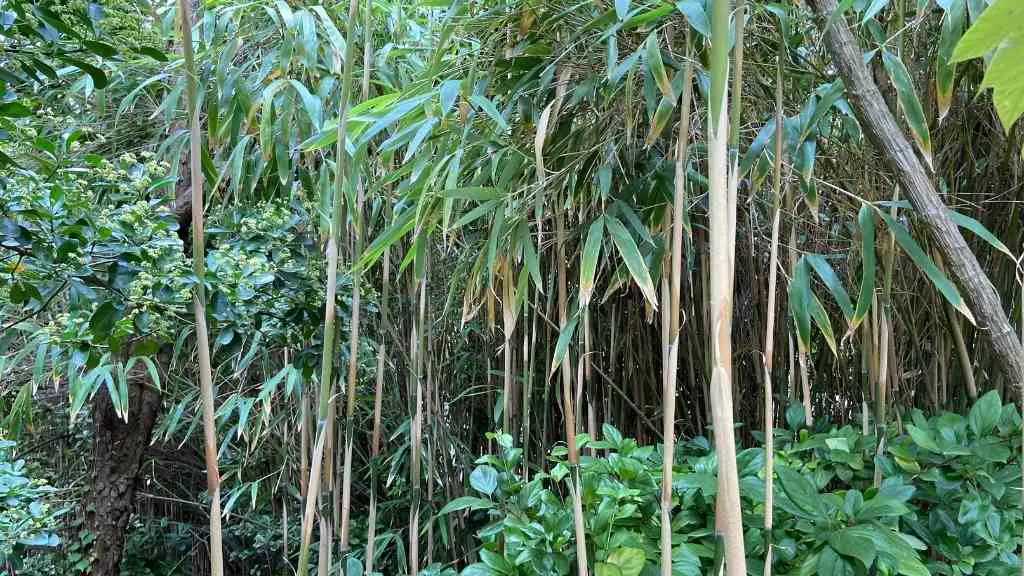
Genus Pseudosasa
This genus of medium-sized running bamboo is attractive and relatively easy to contain. Arrow Bamboo (P. japonica) is especially popular is grows quite well in a pot. Tonkin Bamboo is another revered species, prized for its excellent culms, used widely for fishing poles and ski poles.

Genus Sasa
Indigenous to Japan, these dwarf bamboo specimens are recognizable for their low height and their wide leaves. They are ideal as hedges and groundcovers, providing an excellent complement to decorative trees like Japanese Maple and short-needle pines. And Sasa bamboo will not be discouraged by cold weather.
Genus Sasaella
Another small genus of Japanese dwarf bamboo with about 12 species. Compact and cold-hardy, these ornamentals provide an attractive evergreen shrub or ground cover.
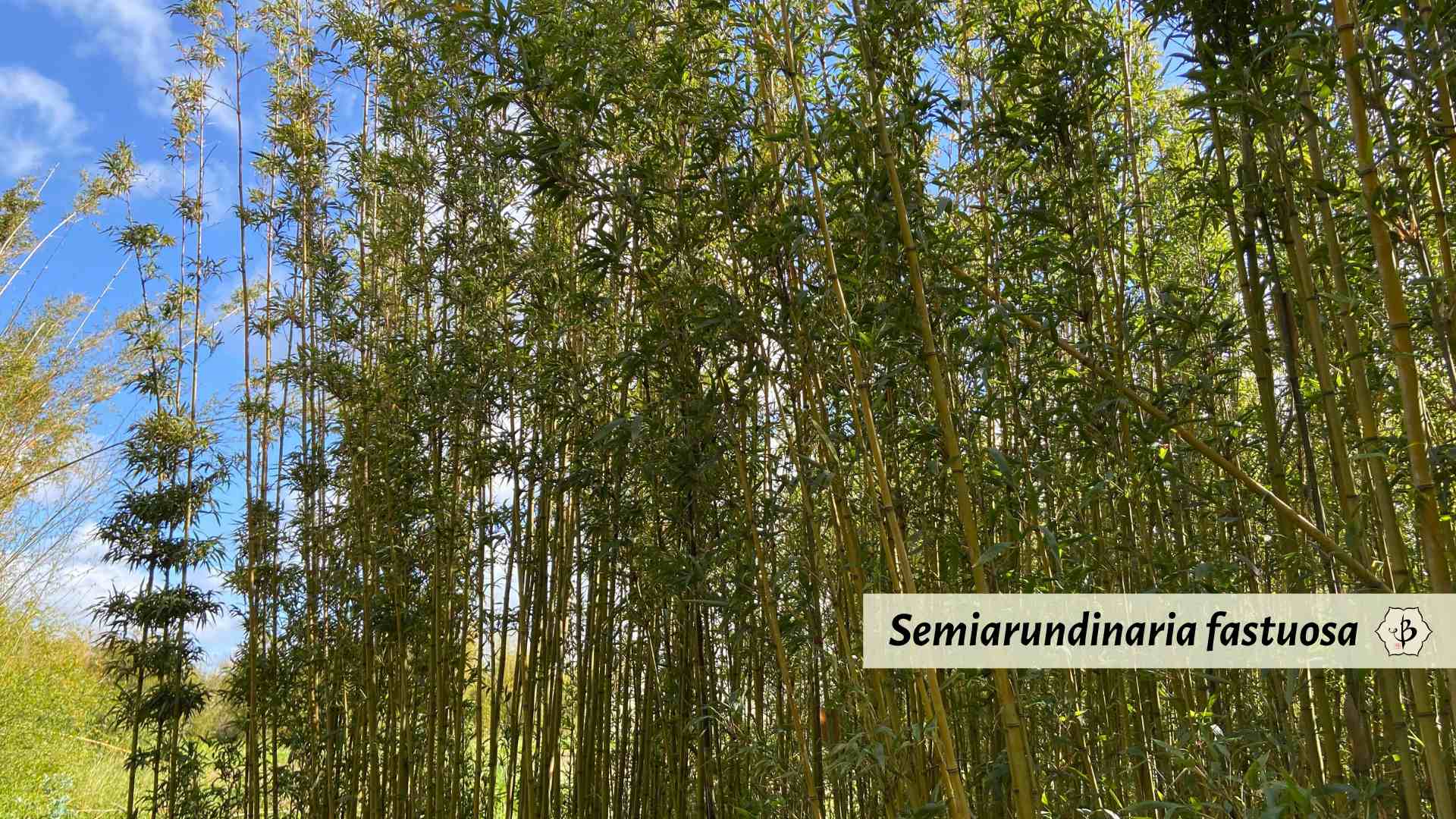
Genus Semiarundinaria
Another interesting genus of temperate bamboo is Semiarundinaria, which includes at least two species of popular ornamentals. S. fastuosa, or Temple Bamboo, has an especially regal appearance, tall, upright and colorful. S. densiflora is also a popular bamboo with an unusual leaf arrangement.
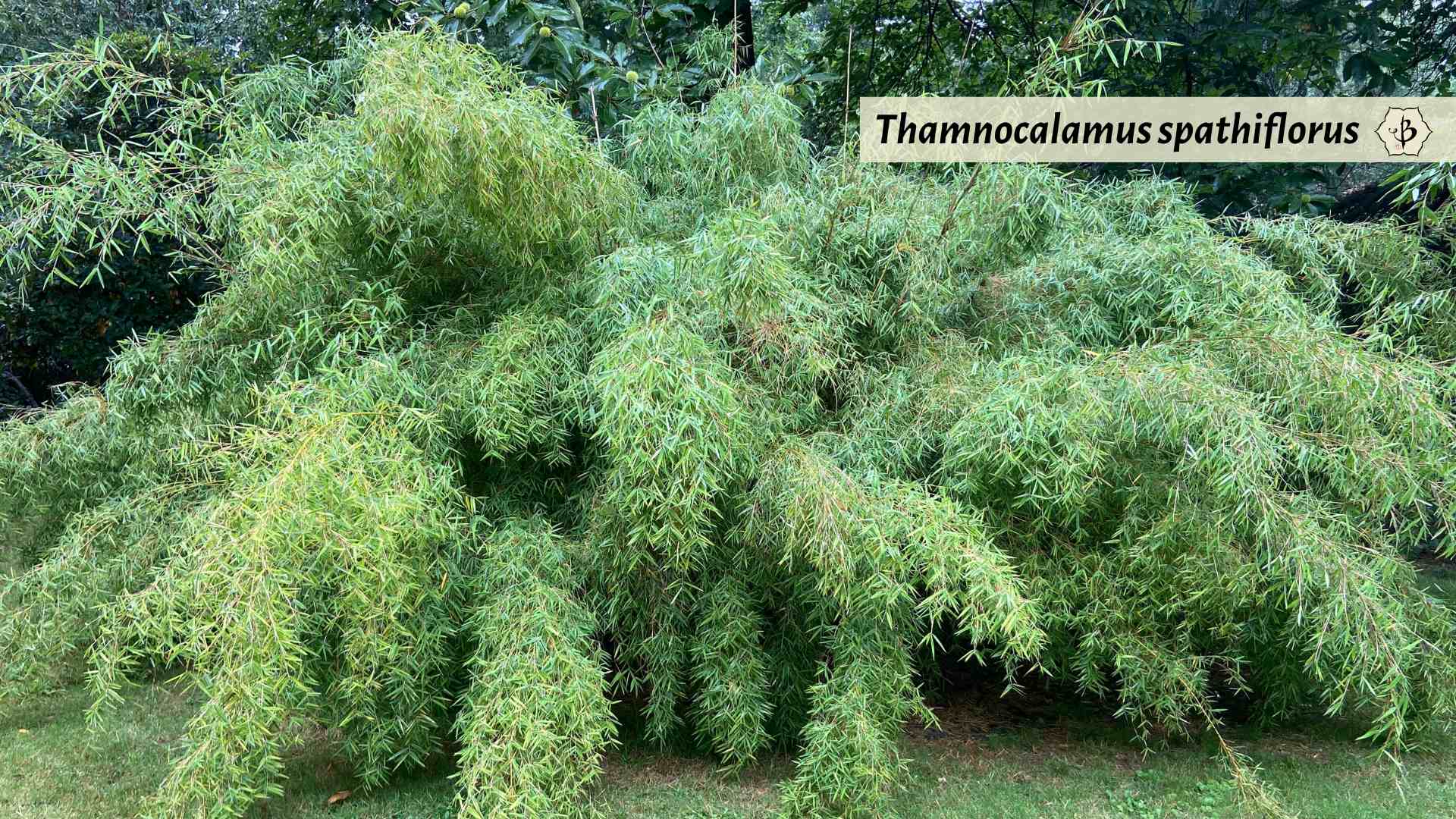
Genus Thamnocalamus
Not every bamboo specialist agrees on the classification of this unusual genus of leafy clumpers. Some systems list three species of Thamnocalamus, while others classify those bamboo varieties under Fargesia. They are native to Nepal, Tibet, and the slopes of the Himalayas, as well as the highlands of sub-Saharan Africa. These varieties are especially cold-hardy, but with a clumping rhizome structure.
Genus Yushania
Yushania is another exotic genus, and formerly listed as Arundinaria. The genus includes 70 to 80 species, primarily growing in the highlands of China and Southeast Asia, as well as Africa. These are running bamboo varieties but slow spreading and noteworthy for their adaptability to cold weather and high altitudes. Yushania alpina, or Highland Bamboo, is one of a handful of bamboo species native to sub-Saharan Africa.
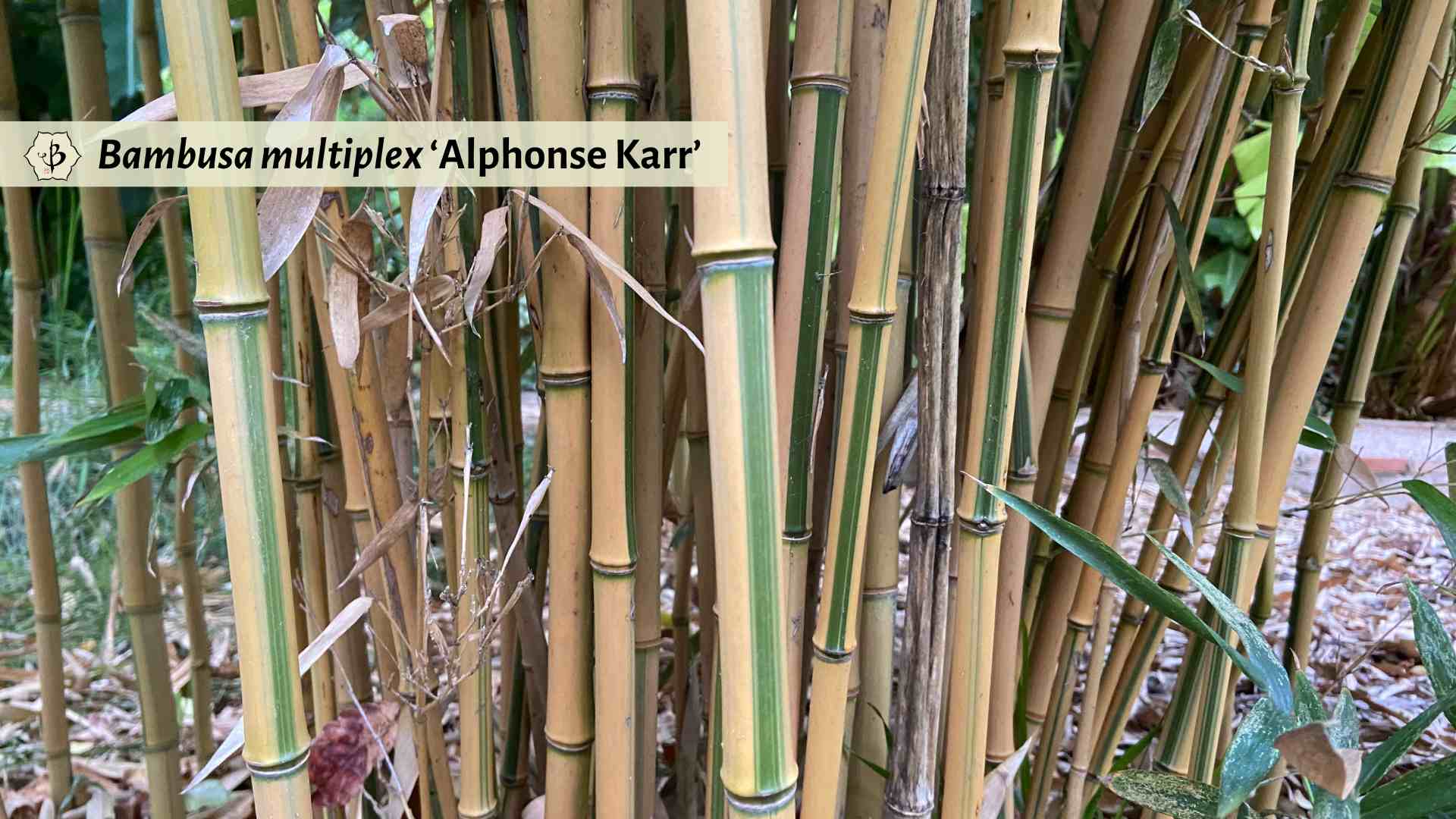
Tribe Bambuseae: Genera of tropical woody bamboo
Found throughout the tropic and subtropic climate zones of the earth, tropical bamboos can be among the most impressive varieties. For the most part, they grow with a clumping habit, and are far less prone to becoming invasive. We find native populations in Asia, Africa, Australia and the Americas, as well as such far-flung corners as Madagascar and New Guinea.
| Genus | Native habitat zones | Running or Clumping | Notes and characteristics |
| Arthrostylidium | Central America | clumping | climbing growth habit |
| Bambusa | China, Taiwan, India, SE Asia, N Australia, New Guinea | clumping | huge variety, 150 species |
| Borinda | Himalayas, S China | clumping | disputed classification |
| Cathariostachys | Madagascar | clumping | 2 species, threatened by deforestation |
| Cephalostachyum | Asia, Madagascar | clumping | small, medium sized plants |
| Chusquea | Central and South America | clumping | open clumps, solid culms |
| Dendrocalamus | India, SE Asia | clumping | giant timber varieties |
| Dinochloa | SE Asia, Philippines | clumping | climbing, zigzag culms |
| Gigantochloa | China, India, New Guinea | clumping | giant timber types |
| Guadua | Central and South America | clumping | giant timber types |
| Melocanna | India, SE Asia | clumping | mass flowering event |
| Olmeca | Mexico | clumping | open clumps, fleshy fruits |
| Neomicrocalamus | southern China, northern India | clumping | climbing habit |
| Otatea | Mexico, Central America | clumping | small, ornamentals |
| Oxytenanthera | sub-Saharan Africa | clumping | drought tolerant |
| Schizostachyum | Asia, New Guinea, Madagascar | clumping | medium to large |
| Thyrsostachys | China, SE Asia | clumping | large timber types |
Genus Aulonemia
This unusual but important genus of neotropical bamboo contains at least 43 described species. The geographical distribution of Aulonemia species covers non-contiguous areas in Mexico, Central America, northern and central Andes, the Guiana Shield, and central and southern Brazil. Some of these bamboo varieties have exceptionally long internodes, and many of them are scandent. Having softer wood than many other bamboo, Aulonemia species have long been used for weaving and other traditional crafts.
Genus Bambusa

More subtropical than truly tropical, this is one of the most widespread genera of bamboo, including more than 100 species of all different shapes, sizes and colors. Most tropical clumpers need a very warm climate where freezing is rare or unheard of. But many varieties of Bambusa can tolerate temperatures into the low 20s or even the teens (Fahrenheit). The more tropical species are popular for commercial cultivation, like B. balcooa and B . blumeana. More adaptable species like B. textilis and B. oldhamii are extremely popular as ornamentals.
Genus Chusquea

Not the most famous genus among bamboo newbies, this neotropical category, native to Central and South America, actually has well over 100 species. Many are excellent choices as ornamentals, tolerating freezing temperatures as well as extreme heat. Most interestingly, the bamboos have solid culms instead of hollow, making them very useful for crafts and furniture making.
Genus Dendrocalamus
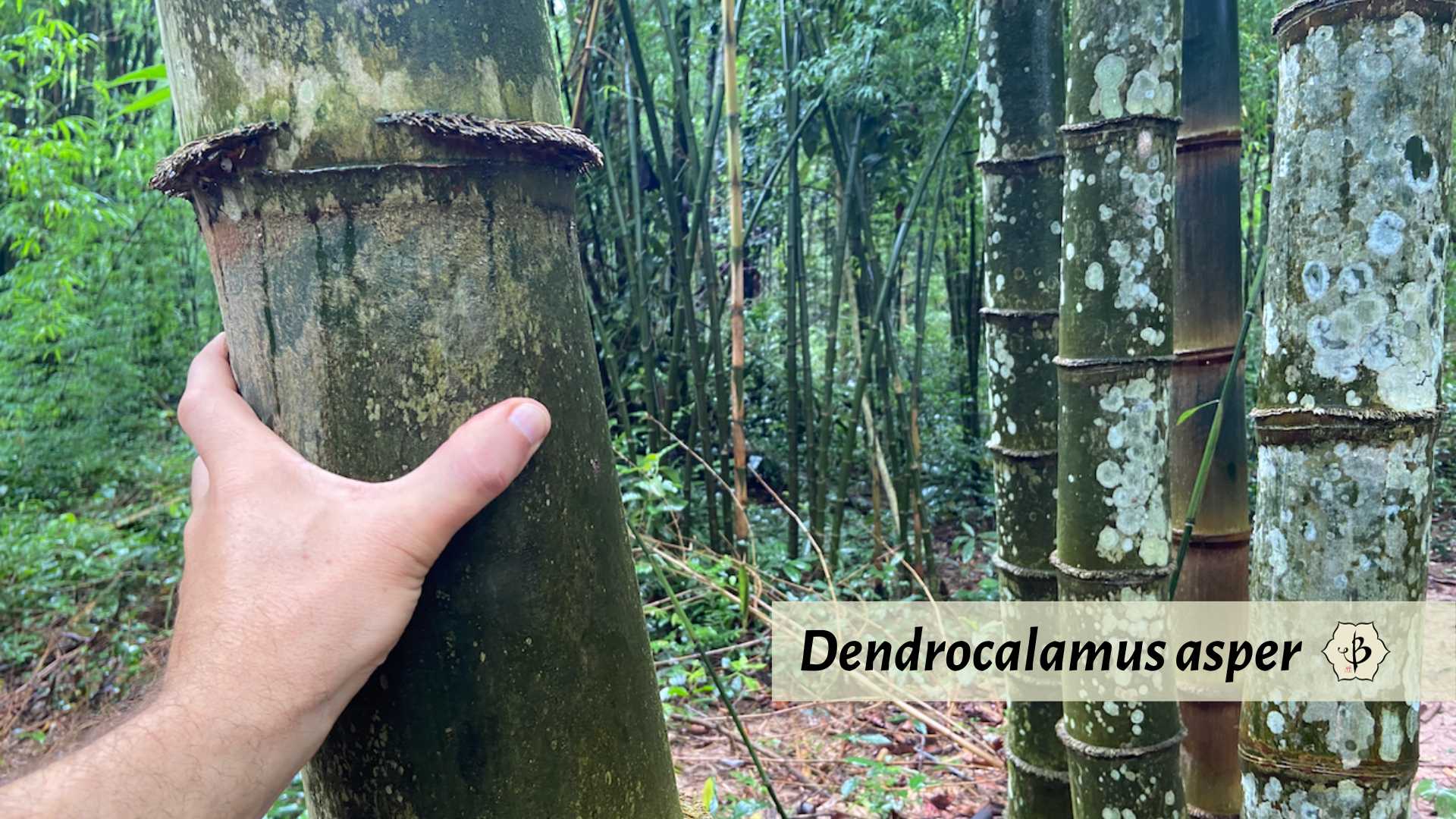
A truly tropical group of bamboos, these are some of the largest and most gigantic in the whole family of grasses, even more impressive than the genus Gigantochloa. Many species can exceed 100 feet in height and some (D. sinicus) will approach 150 feet. D. asper is quickly becoming the most widely cultivated bamboo for commercial use, with its incredibly strong and straight poles. But if there’s any chance of frost, these Southeast Asian giants won’t be happy.
Genus Gigantochloa
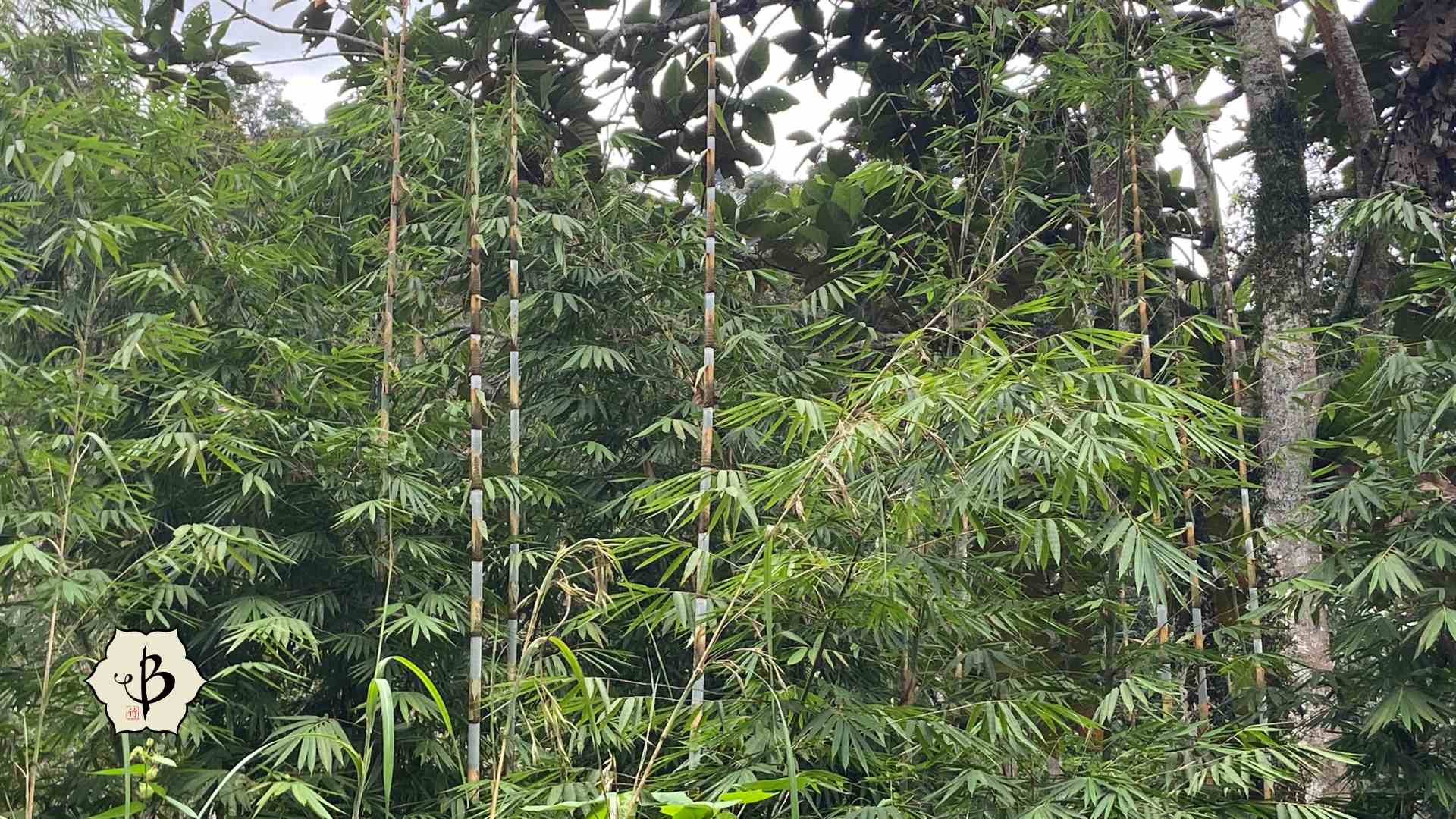
Not as massive as most of the Dendrocalamus species, members of the genus Gigantochloa can reach a very impressive size. They are primarily native to Southeast Asia, Indonesia and the Pacific Islands. In many respects, they bear a very close resemblance to Bambusa and Dendrocalamus, but the long-lasting culm sheaths are usually a good indicator.
Genus Guadua
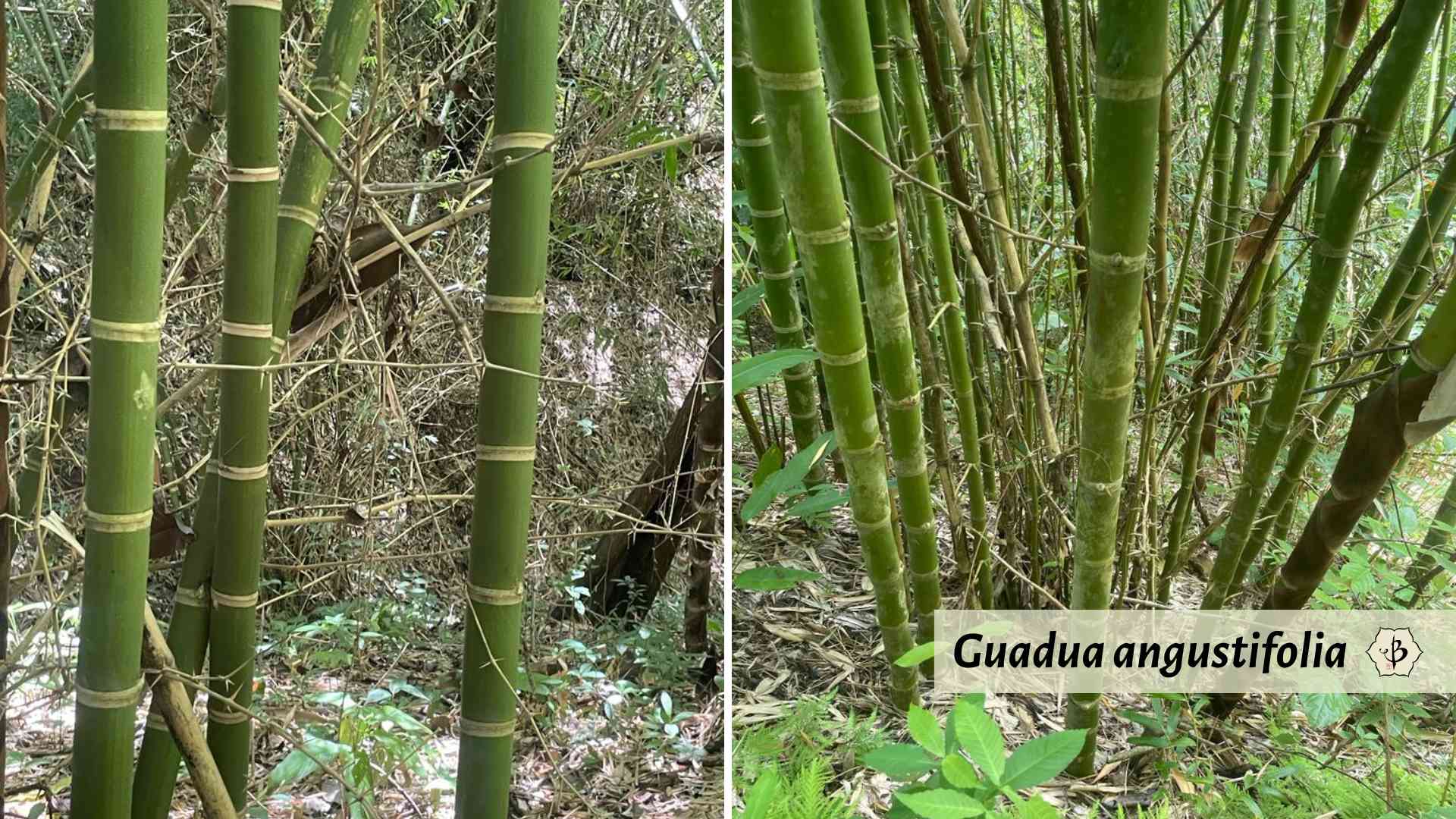
In South America, they consider Guadua angustifolia to be the greatest and most important bamboo species in the world. It’s certainly among the top five, if you ask me. In Colombia and Ecuador, they can build anything with this tropical timber grass, commonly referred to as Iron Bamboo. But efforts to grow the species elsewhere have not been so successful. It really prefers the high altitudes and the equatorial orientation.
Genus Schizostachyum
This more exotic genus of bamboo actually includes about 70 species, primarily native to Southeast Asia, the Pacific Islands and Madagascar. In terms of ornamental bamboo varieties, Schizostachyum brachycladum, also called Sacred Bali Bamboo, is the most popular, but it does require tropical conditions to thrive.
Genus Thyrsostachys
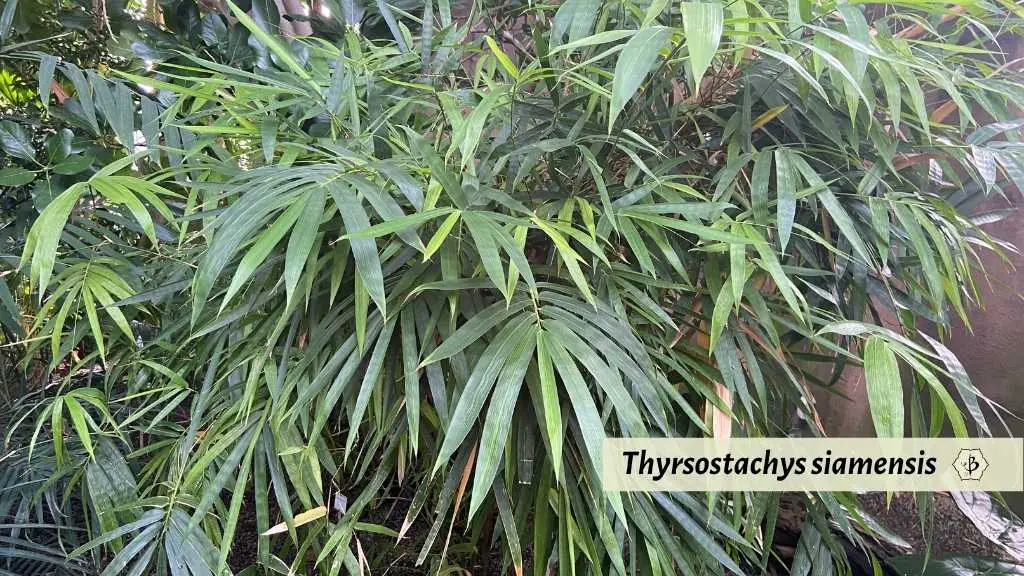
A rather exotic genus, with only two recognized species, these tropical delights thrive in Thailand and Southeast Asia. Monastery Bamboo is a wonderful ornamental, where the climate is warm enough, but in its native habitat, it is valued both for its edible shoots and its construction-quality poles.
Genus Yushania
A somewhat mysterious genus of bamboo, and one that’s not entirely agreed upon by authors and experts, Yushania includes several dozen species of mostly clumping bamboo. Members of this genus are predominantly native to higher elevations, making them more cold-hardy than most clumpers. But their rhizomes also spread more than your average clumper, and are sometimes listed as “spreading” bamboo. I like to think of them as open clumpers.
Yushania is found around the foothills of the Himalayas — alongside Fargesia, Borinda, and Himalayacalamus — as well as Southeast Asia, some Pacific Islands, and much of sub-Saharan Africa. They generally have slender culms, no more than an inch in diameter, and dense foliage, which causes the poles to arch over very gracefully.

Tribe Olyreae: Tropical, herbaceous bamboo
This small tribe is more closely related to the tropical Bambuseae. They are something of a novelty and grow almost exclusively in the tropics of the New World, especially in the Amazon basin. Typically, they grow in the shady undergrowth of the jungles and rainforests. Unlike their woody cousins, these bamboos have soft, tender culms, and look more like small shrubs. They do not exhibit the same kinds of root systems as their more developed relatives.
Botanists recognize 3 sub-tribes of herbaceous bamboo, and a total of 21 genera. Several of these genera are monotypic, meaning they only contain one species. These compact, exotic varieties have not been naturalized beyond their native habitats and are not grown by nurseries.
| Genus | Native habitat | Sub-tribe | Notes |
| Agnesia | Brazil, Colombia, Peru | Olyrinae | monotypic (only one species) |
| Arberella | Central and South America | Olyrinae | includes 7 species |
| Buergersiochloinae | South America, Africa, Madagascar | Buergersiochloinae | monotypic |
| Cryptochloa | throughout Latin America | Olyrinae | 8 species |
| Diandrolyra | Brazil | Olyrinae | 3 species |
| Ekmanochloa | Cuba | Olyrinae | 2 species |
| Eremitis | Brazil | Parianinae | monotypic |
| Froesiochloa | Brazil, the Guianas | Olyrinae | monotypic |
| Lithachne | Mexico to Paraguay, and Cuba | Olyrinae | 4 species |
| Maclurolyra | Panama, Colombia | Olyrinae | monotypic |
| Mniochloa | Cuba | Olyrinae | monotypic |
| Olyra | Neotropics and Africa | Olyrinae | 24 species |
| Pariana | Latin America | Parianinae | 29 species |
| Parodiolyra | South America | Olyrinae | 6 species |
| Piresiella | Cuba | Olyrinae | monotypic |
| Raddia | Brazil, the Guianas | Olyrinae | 9 species |
| Raddiella | Panama, South America | Olyrinae | 8 species |
| Rehia | Brazil, the Guianas | Olyrinae | monotypic |
| Sucrea | Brazil | Olyrinae | 3 species |
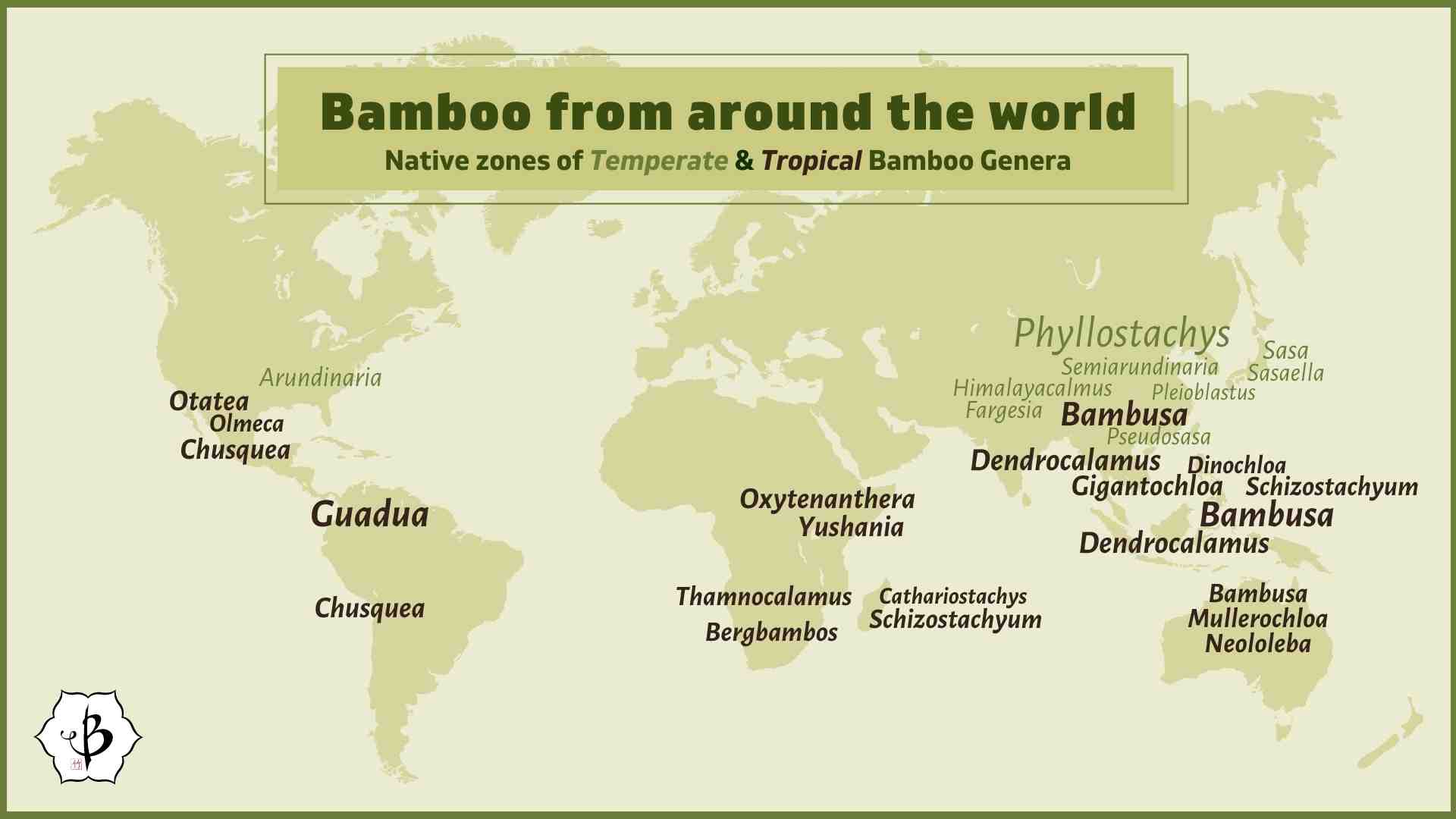
Further reading
If you’ve found this genus-by-genus directory of bamboo useful and interesting, you might also check out some of these other popular articles.

